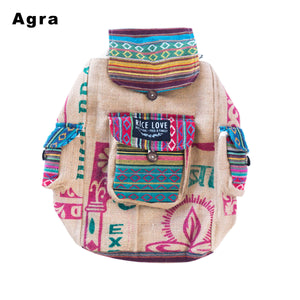All About Agra, India

I would like to introduce you Agra, one of India’s gems of a city. Probably most famously known for being the home of the Taj Mahal, Agra is located on the Yamuna River in the state of Utlar Pradesh. It is included in the “Golden Triangle” which is a tourist circuit along with the cities Delhi and Jaipur. I guess we’ll have to discover Delhi next time, since I have introduced you to Jaipur and now Agra, I’ll have to finish it off and complete the “Golden Triangle”.

Agra is an ancient settlement which was just a village in the 17th century. It was
mentioned for the first time in 1080 A.D. when a Ghaznavide (a
Persianate/Muslim dynasty) force captured it. In their greatest measure, the
Ghaznavide ruled large parts of Iran, Afghanistan and Transoxiana (a historical
region of Turkistan) and the northwest Indian subcontinent from the years of 977
to 1186.

It is home to several amazingly beautiful architectural structures. Also, Agra is
home to one of Mother Teresa’s Missionary Homes however not to be
overshadowed by one of Agra’s most renowned smaller villages, Korai Village,
which is worth mentioning due to it being well known for its austerity. The village
is known for its lack of necessity or use of technology, just as their ancestors
were. In fact, tourists often visit this unique little village BECAUSE of their
primordial way of living. It is most certainly worth a peek if
you find yourself in India!

But you want to hear about the most well-known landmark in India of course, the
Taj Mahal! Shah-Jahan, Mughal emperor, ordered the construction of the
mausoleum in 1632 to lay the remains of his late wife, Mumtaz Mahal. It took 20
years to build and sits on the southern bank of the Yamuna River. It is one of the
most magnificent displays of Muglal architecture. It includes Indian, Persian and
Islamic influence.

The center is the actual Taj Mahal built with scintillating white marble that some
say seems to change color depending on the time of day. It is designated as a
UNESCO (United National Educational Scientific and Cultural Organization) World
Heritage Site since 1883 and is to this day, one of the world's most celebrated
structures and symbols of India.
Shah-Jahan took Mumtaz Mahal as a wife in 1612 and in 1631, she died in
childbirth while birthing for her 14th time. Pretty amazing, I know! Shah-Jahan
(known for his commissioning of striking structures during his reign) order there
to be a tremendous mausoleum across the Yamuna River from his palace at Agra.

It was, of course, named the Taj Mahal in honor of Mumtaz Mahal which is no
doubt why you’ll not only find gorgeous white marble, but also inlaid semi-
precious stones like crystal, lapiz lazuli, turquoise, amthethyst and jade as well as
its intricate designs creating a technique knows as “pietra dura”. Inside this
grande structure, at the center, you’ find the “cenotaph” (false tomb) of Mumtaz
and the real remains at Garden level. What a testament to his bride of 19 years!
Call me a hopeless romantic but maybe the fact it took 20 years to build was
Mumtaz’s way of making it to 20 years, heh?
By: Hayley Moore
Resources:
wikipedi.com
Indiatourism.guide
history.com
Photos courtesy of @lindzisme




